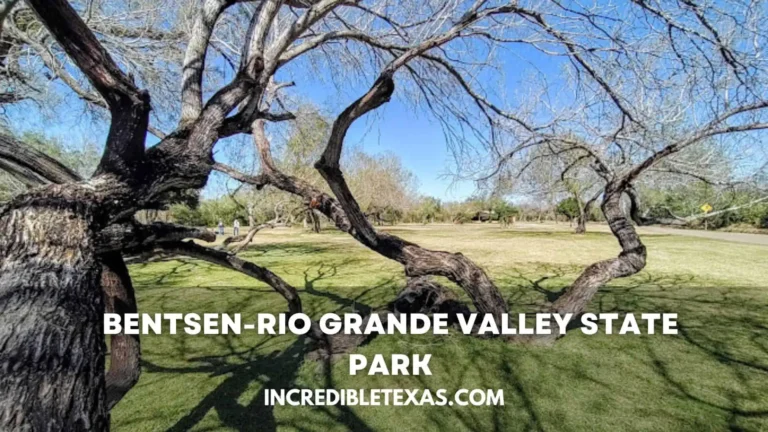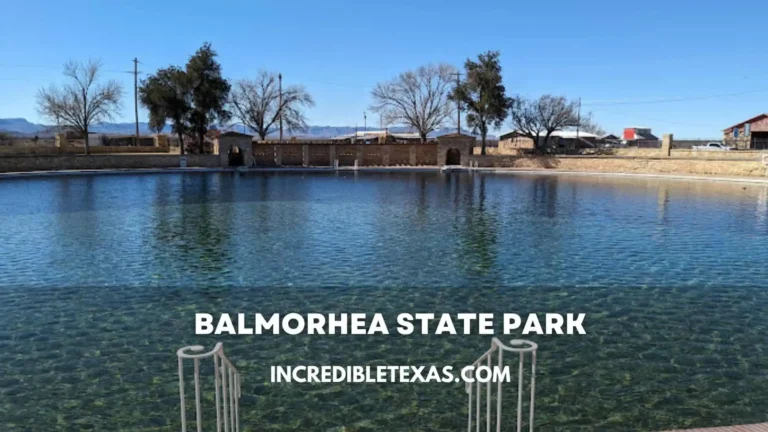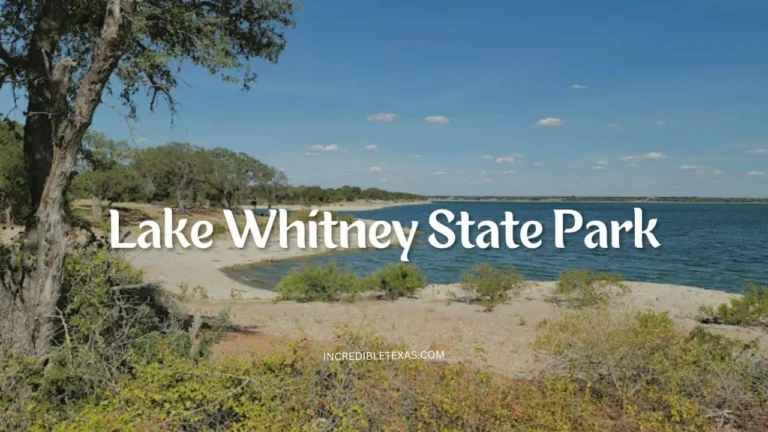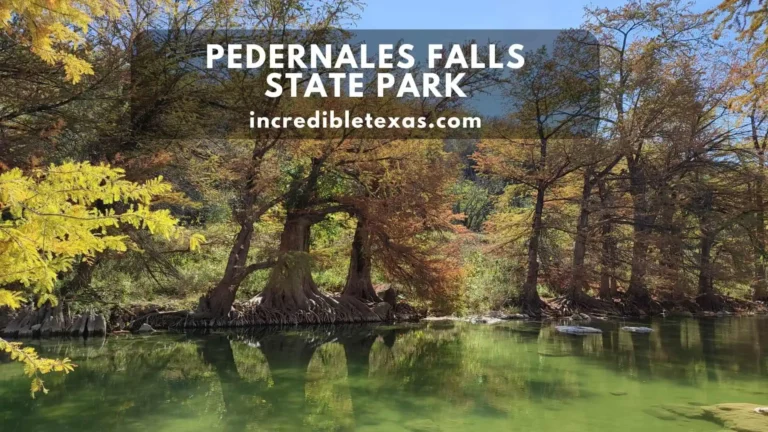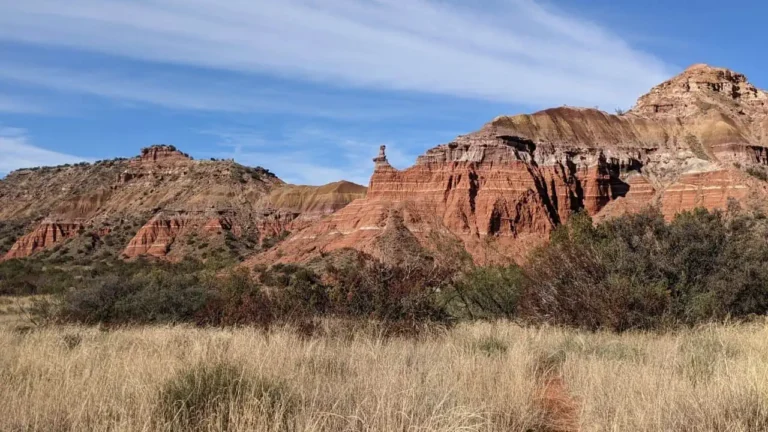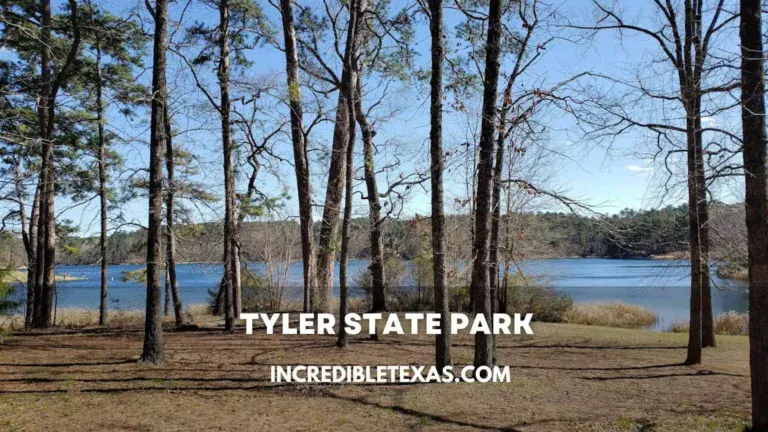Top 12 Best East Texas State Parks and Nature Reserves
East Texas beckons nature enthusiasts with its lush pine forests, serene lakes, and diverse wildlife. Nestled in this verdant region are some of the state’s most captivating outdoor destinations.
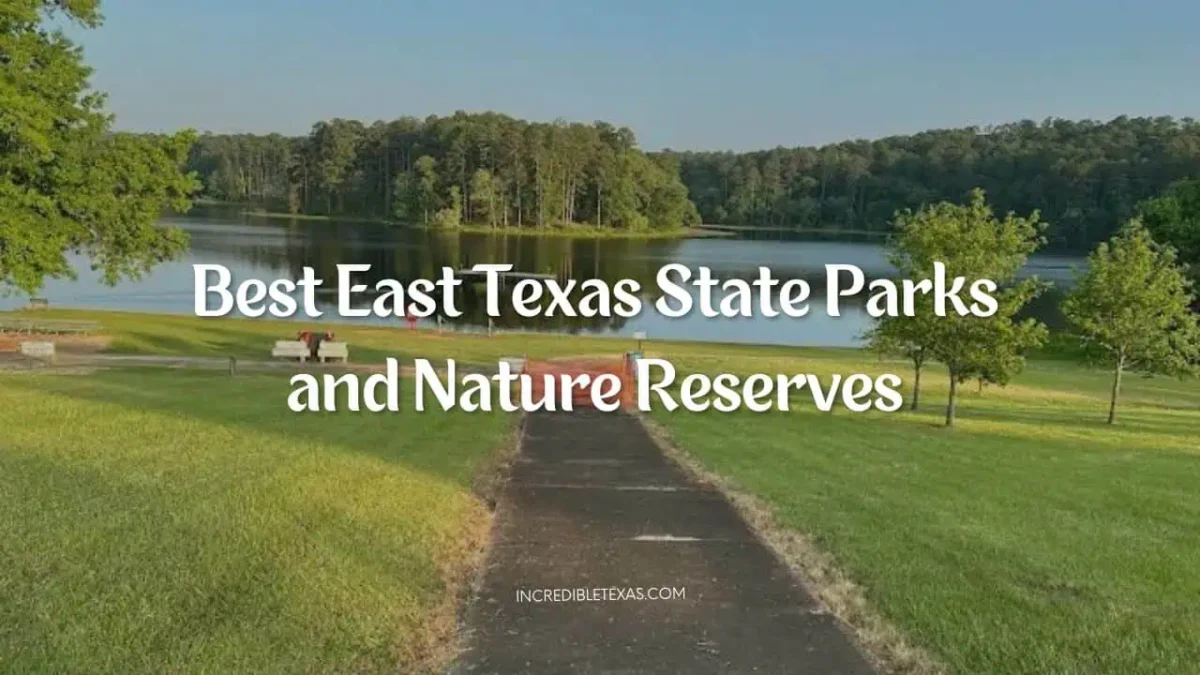
From hiking trails that wind through towering trees to tranquil fishing spots, East Texas state parks and nature reserves offer a respite from the hustle of everyday life. This article will guide you through the top natural havens in the area, highlighting their unique features and activities.
Get ready to explore hidden gems where you can camp under starlit skies, observe rare bird species, and immerse yourself in the region’s rich ecological tapestry.
See also: 10 Best State Parks in Texas for Camping, Hiking, Fishing, and RV Camping
Tyler State Park
Nestled just north of Tyler, Texas, Tyler State Park spans over 985 acres of stunning natural beauty. This serene escape, featuring a picturesque 64-acre spring-fed lake, offers visitors a chance to immerse themselves in the East Texas Pineywoods. Established in 1939, the park has become a beloved destination for nature lovers and adventure seekers alike.
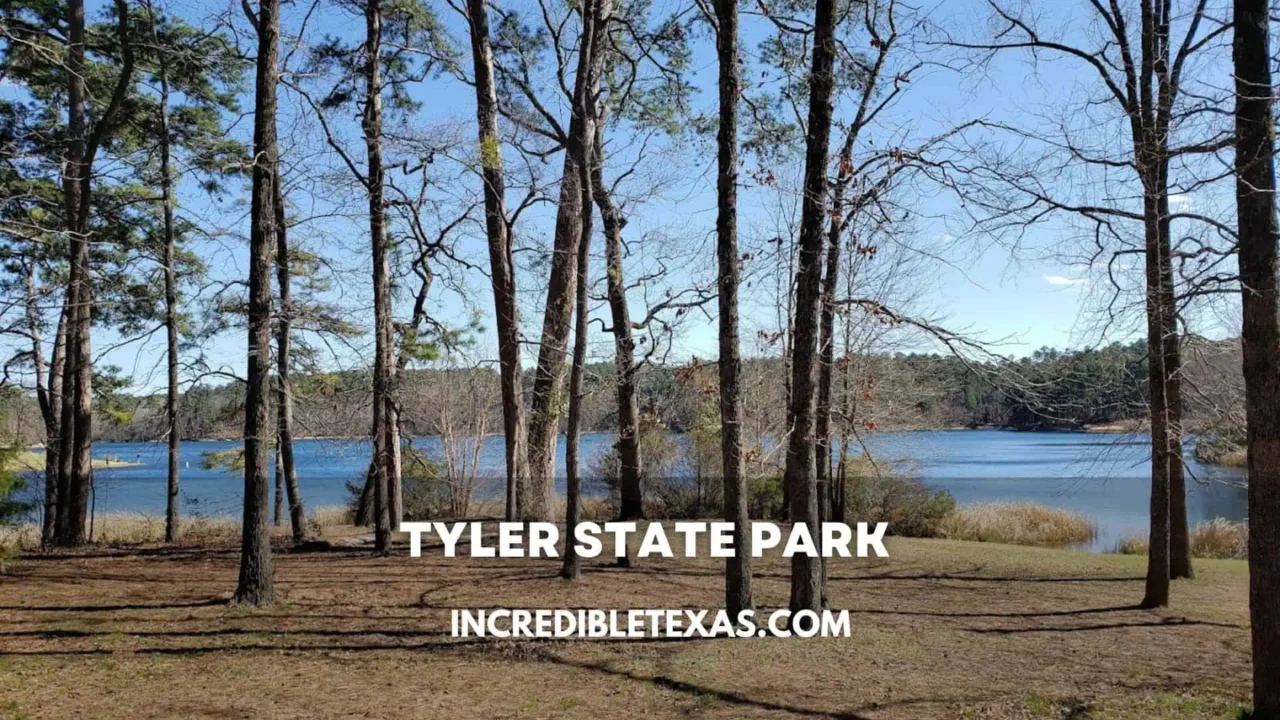
Main Attractions
Hiking and Biking Trails Tyler State Park boasts over 13 miles of trails perfect for hiking and mountain biking. The trails range from easy to challenging, making them suitable for all skill levels.
The Whispering Pines Nature Trail is particularly notable, having been crafted by the Civilian Conservation Corps over 70 years ago. This family-friendly trail offers a delightful journey through the lush forest, providing scenic views and a chance to spot local wildlife.
Swimming, Boating, and Fishing in the Lake The spring-fed lake at the heart of the park is ideal for a variety of water activities. Whether you prefer a leisurely swim, a peaceful day of fishing, or an adventurous paddle, the lake caters to all.
With three fishing piers and boat rentals available, it’s a haven for anglers. You can expect to catch catfish, crappie, perch, and bass. For those who enjoy water sports, renting canoes, paddleboards, kayaks, or pedal boats adds an extra layer of fun. Remember, motorized boats are not allowed, ensuring a tranquil environment for everyone.
Picnic Areas and Camping Facilities Tyler State Park offers numerous picnic areas where you can relax under the towering pines. For an extended stay, the park provides various camping options, including campsites, cabins, and screened shelters.
Whether you’re in a tent or an RV, the park’s facilities ensure a comfortable and enjoyable experience. Each campsite is equipped with essential amenities like restrooms, showers, fire pits, and picnic tables.
See Also – Explore Martin Creek Lake State Park: Hours, Pricing, Camping Information, and More
Seasonal Activities and Events
The park is vibrant with activities throughout the year. From March to Thanksgiving, especially on weekends, it can get quite busy. For a quieter experience, visiting early in the morning is recommended. Seasonal events like guided hikes, nature programs, and fishing clinics add to the park’s charm, making each visit unique.
Tips for Visitors
- Best Times to Visit: Spring and fall are ideal for enjoying the park’s beauty and pleasant weather. Early mornings are perfect for a peaceful visit.
- Admission and Fees: Entry is affordable at $6 for adults (ages 12 and above), while children under 12 can enter for free. For frequent visitors, the Texas State Parks Pass, costing $70 annually, offers unlimited access to over 80 state parks.
- Reservations: It’s advisable to reserve campsites and cabins in advance, especially during peak seasons. Online reservations are convenient and quick.
- Safety Tips: Always swim in designated areas and follow safety guidelines. If you’re new to fishing, the park rents out equipment, and no fishing license is needed for shore fishing within the park.
Tyler State Park is a true gem of East Texas, offering a perfect blend of adventure and relaxation. Whether you’re hiking through the whispering pines, paddling across the serene lake, or simply enjoying a picnic, this park promises a memorable outdoor experience.
See Also – Explore the Complete Guide to Atlanta State Park: Map, Hours, Pricing, Trails, Camping, and Cabins
Lake Livingston State Park
Situated about an hour north of Houston, Lake Livingston State Park spans over 635 acres along the shores of one of Texas’s largest lakes. Known for its serene atmosphere, the park offers a perfect retreat from the hustle and bustle of city life, with lush pine forests and an expansive lake providing the ideal backdrop for a variety of outdoor activities.
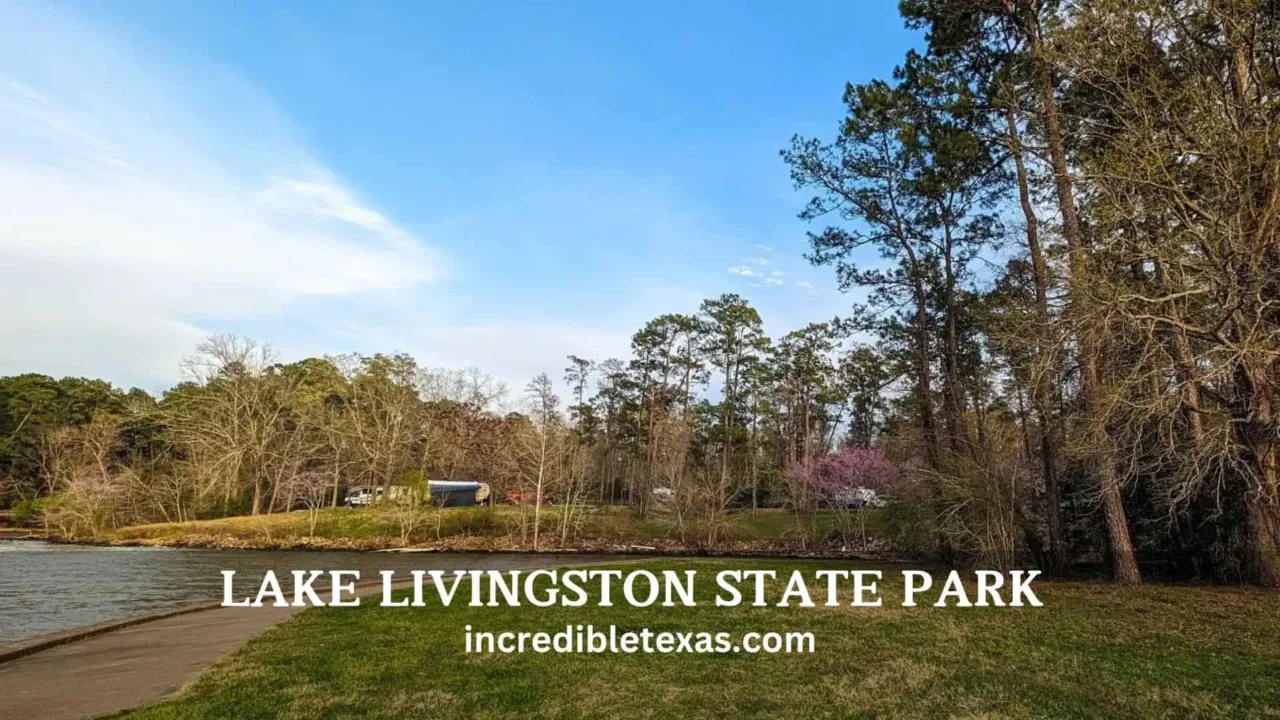
Key Activities
Fishing and Boating on Lake Livingston: Lake Livingston is a paradise for anglers and boating enthusiasts. With over 82,000 acres of water, the lake is teeming with fish, including catfish, crappie, bass, and perch. The park provides three boat ramps, two fish cleaning stations, and a fishing pier, making it easy to enjoy a day on the water. Remember, you don’t need a fishing license to fish from the shore in Texas state parks.
Hiking and Birdwatching Trails: The park boasts over 10 miles of hiking trails that wind through East Texas’s pine forests and creeks. These trails offer excellent opportunities for birdwatching, with many native species calling the park home.
Whether you’re a seasoned hiker or just looking for a leisurely walk, you’ll find a trail that suits your pace. For those who prefer biking, designated paths allow you to explore the park on two wheels.
Camping and RV Sites Lake Livingston State Park features a variety of camping options to suit every preference. From tent sites with nearby water to full-hookup RV sites, you’ll find the perfect spot to set up camp.
The park also offers screened shelters and group facilities for larger gatherings. Reservations are recommended, especially during peak seasons, to ensure you secure your preferred site.
See Also – Explore South Llano River State Park: Map, Hours, Pricing, Trails, Camping, and Cabins Guide
Visitor Amenities and Services
The park is well-equipped with amenities to enhance your visit. These include restrooms, showers, picnic tables, and grills. The park store offers essential supplies, souvenirs, and rentals for canoes, kayaks, and paddleboards.
The park provides ranger-led programs for those interested in educational experiences, including guided hikes, birdwatching tours, and craft workshops.
See Also – Comprehensive Guide to Abilene State Park: Map, Hours, Pricing, Trails, Camping, and Cabins
Tips for Enjoying the Park
- Best Times to Visit: Spring and fall offer mild temperatures and fewer crowds, making these seasons ideal for outdoor activities. Weekdays are typically quieter compared to weekends.
- Reservations: Book your campsite or shelter well in advance, particularly during busy times such as holidays and weekends.
- Weather Preparedness: Texas weather can be unpredictable, so pack accordingly. Sunscreen, insect repellent, and plenty of water are must-haves.
- Wildlife Awareness: While the park is a haven for wildlife, including alligators, it’s essential to observe from a safe distance and never feed the animals.
- Essentials to Pack: Comfortable footwear for hiking, a map, snacks, and a camera to capture the beautiful scenery.
Lake Livingston State Park promises a memorable outdoor experience with its stunning natural beauty and diverse activities. Whether you’re casting a line, hiking through pine forests, or simply relaxing by the lake, this park is a top destination for nature lovers in Texas.
Daingerfield State Park: A Tranquil Retreat in East Texas
Daingerfield State Park, nestled in the heart of the Piney Woods region of East Texas, spans over 500 acres and features an 80-acre spring-fed lake. This historic park, developed in 1938 by the Civilian Conservation Corps (CCC), offers a serene escape with its towering trees, clear lake, and abundant wildlife. It’s a favorite for families, nature lovers, and history enthusiasts alike.
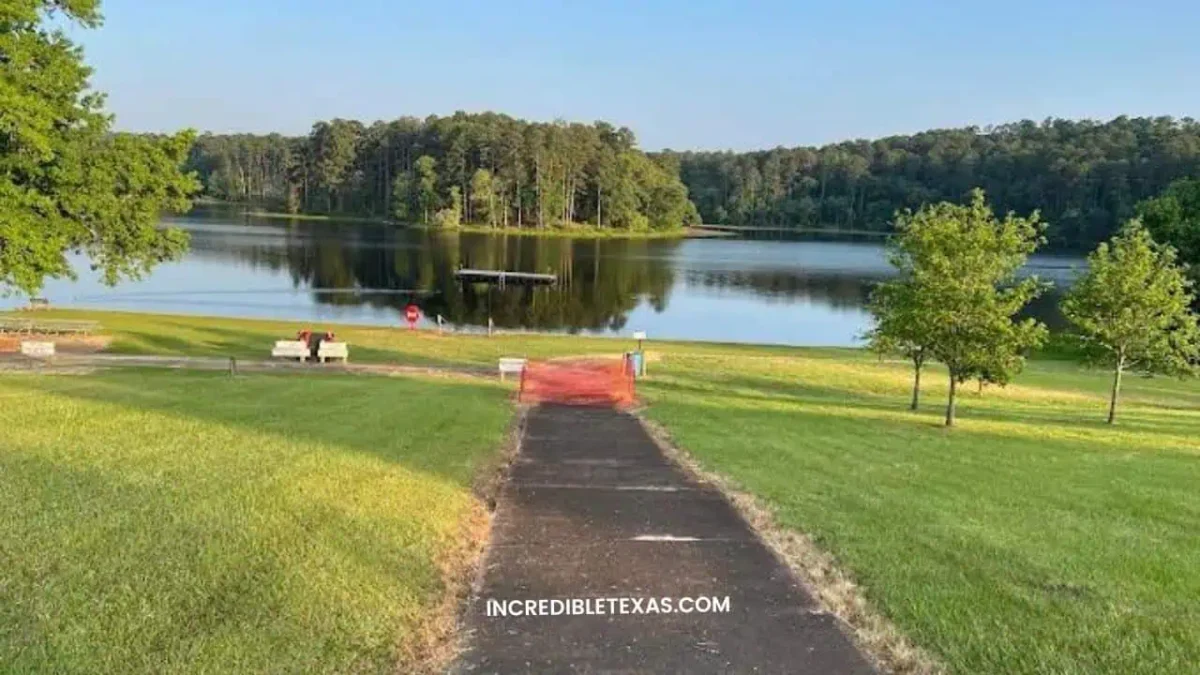
See Also – Top Activities in Big Bend Ranch State Park: Camping, Hiking, River Fun, and Expert Tips
Main Attractions
Historic Cabins and Facilities One of the park’s unique features is its historic cabins, which were built by the CCC and retain their rustic charm while offering modern amenities. Staying in these cabins provides a cozy and convenient base for exploring the park. The park also has well-maintained campsites that cater to both tent campers and RV travelers, complete with water and electrical hookups.
Lake Activities (Swimming, Fishing, Paddle Boating): The centerpiece of Daingerfield State Park is its beautiful lake, perfect for a variety of water activities. The park offers a dedicated swimming area and a floating dock, making it ideal for a refreshing dip on a hot day.
Fishing enthusiasts will find the lake stocked with bass, crappie, and catfish, and a fishing pier and boat ramp are available for use. Paddle boating, canoeing, and kayaking are popular activities, with rentals available during the warmer months.
Hiking and Nature Trails: Daingerfield State Park is home to several picturesque hiking trails. The Rustling Leaves Trail is a 2.4-mile loop that meanders through the forest and offers stunning views of the lake.
For those looking for a bit more of a challenge, the Mountain View Trail is a shorter, 1.2-mile hike that takes you to a hilltop with a panoramic view of the park. These trails provide excellent opportunities for birdwatching and wildlife spotting.
Seasonal Highlights and Events
Fall is arguably the best time to visit Daingerfield State Park, thanks to the vibrant foliage that transforms the park into a tapestry of reds, oranges, and yellows. This season is perfect for hiking and photography.
Spring also offers mild temperatures and blooming wildflowers, making it another great time for outdoor activities. The park hosts various ranger-led programs and events throughout the year, including nature hikes, educational talks, and craft workshops, enhancing the visitor experience.
See Also – Explore Bastrop State Park: Maps, Hours, Pricing, Hiking Trails, Camping, and Cabins in Texas
Tips for Visitors
- Best Times to Visit: Fall and spring are ideal due to pleasant weather and beautiful scenery. Summer is great for water activities but can be busy.
- Reservations: Make reservations in advance, especially for cabins and campsites, as the park can fill up quickly during peak seasons.
- What to Bring: Essentials include water, snacks, sunscreen, insect repellent, comfortable hiking shoes, and a swimsuit if you plan to swim. A camera is a must for capturing the stunning landscapes.
- Park Fees: The daily entrance fee is $4 for adults (ages 13 and older). A Texas State Parks Pass, costing $70 annually, covers entry fees for your entire family and is a worthwhile investment if you visit multiple state parks.
- Transportation: The park is easily accessible by car, located just over two hours from Dallas. Ample parking is available within the park.
Daingerfield State Park offers a blend of history, natural beauty, and outdoor fun, making it a must-visit destination in East Texas.
See Also – Explore Colorado Bend State Park: Map, Hours, Camping, and Hiking Trails Guide
Toledo Bend Reservoir: A Premier East Texas Destination
Toledo Bend Reservoir, straddling the Texas-Louisiana border, is the largest man-made lake in the South, covering approximately 185,000 acres. Created in 1969 for water storage and hydroelectric power, it has since become a top spot for fishing, boating, and outdoor recreation. With its vast expanse and rich aquatic life, Toledo Bend offers endless opportunities for adventure and relaxation.

See Also – Explore the Best State Parks in Texas with Cabin Rentals
Key Attractions
Fishing (Bass Fishing Tournaments): Toledo Bend is renowned for its bass fishing, frequently hosting major tournaments that draw anglers from across the country. The lake is home to largemouth bass, crappie, catfish, and white bass, providing excellent year-round fishing.
Popular spots include the San Miguel and Housen Bay areas, known for their abundant fish populations and challenging fishing conditions. Whether you’re a seasoned pro or a weekend fisherman, the diverse fish species and tournament opportunities make Toledo Bend a fishing haven.
Boating and Water Sports: Boating enthusiasts will find plenty to love at Toledo Bend. The reservoir’s size and clear waters make it perfect for various water sports, including water skiing, jet skiing, and paddleboarding.
Numerous marinas and boat ramps provide easy access, and rentals are available for those who don’t have their own equipment. Whether you prefer a relaxing paddle or an adrenaline-pumping ride, Toledo Bend’s waters cater to all types of water sports.
Scenic Spots for Picnicking and Camping: The scenic beauty of Toledo Bend is ideal for picnicking and camping. Several parks and campgrounds around the reservoir offer picnic areas, RV sites, and tent camping spots.
Sites like North Toledo Bend State Park and South Toledo Bend State Park provide excellent facilities and stunning views, making them perfect for family outings and weekend getaways. The shady trees and tranquil waters create a peaceful atmosphere for a day of relaxation or an overnight adventure.
Best Times to Visit for Fishing and Recreation
Spring and fall are the best times to visit Toledo Bend for fishing, as the fish are more active in cooler temperatures. During these seasons, you’ll find the lake bustling with anglers looking to catch the big one.
For water sports and general recreation, summer offers warm weather ideal for swimming, boating, and enjoying the outdoors. However, the lake is enjoyable year-round, with each season providing unique experiences.
See Also – Explore Meridian State Park: Map, Hours, Pricing, Trails, Camping, and Cabins in Texas
Visitor Information
Permits and Regulations: Fishing at Toledo Bend requires a valid fishing license, either from Texas or Louisiana, depending on which side of the lake you’re on. The same fishing limits apply across the lake, making it straightforward for visitors. Boaters should ensure they have the necessary safety gear and are aware of local boating regulations.
Facilities: Toledo Bend is well-equipped with facilities to enhance your visit. Marinas around the lake offer boat rentals, bait shops, and fuel stations. Camping areas are furnished with restrooms, showers, and picnic tables, ensuring a comfortable stay. Additionally, the parks provide educational programs and guided tours, adding to the overall experience.
See Also – Explore Resaca De La Palma State Park: Map, Hours, Pricing, Trails, Camping, and Cabins in Texas
Tips for a Great Visit
- Plan Ahead: Make reservations for campsites and boat rentals, especially during peak seasons.
- Pack Essentials: Bring sunscreen, insect repellent, and plenty of water. Don’t forget your fishing gear if you plan to fish.
- Safety First: Always wear life jackets when boating and follow all safety guidelines.
- Check Conditions: Look up weather forecasts and lake conditions before heading out to ensure a safe and enjoyable trip.
Toledo Bend Reservoir is a must-visit destination for anyone looking to experience the best of East Texas’s natural beauty and outdoor activities. Whether you’re fishing in a tournament, paddling across serene waters, or camping under the stars, Toledo Bend promises an unforgettable adventure.
See Also – Explore San Angelo State Park: Map, Hours, Pricing, Camping, and Trails Guide
Big Thicket National Preserve: An Untamed Texas Treasure
Nestled in Southeast Texas, Big Thicket National Preserve is often referred to as the “biological crossroads of North America.” This unique preserve, spanning over 113,000 acres, safeguards a remarkable diversity of life across nine distinct ecosystems, including longleaf pine forests, cypress-lined bayous, and hardwood uplands.
Established in 1974, Big Thicket is celebrated for its role in protecting this convergence of habitats, making it a paradise for nature enthusiasts and adventure seekers alike.

Main Attractions
Diverse Ecosystems and Wildlife: The real allure of Big Thicket lies in its rich biodiversity. Visitors can explore a variety of habitats in one location, from the dense forested areas home to rare carnivorous plants like pitcher plants and sundews, to the wetlands teeming with birds, reptiles, and amphibians. It’s not uncommon to spot white-tailed deer, river otters, and even alligators in their natural environment, making every visit a potential wildlife adventure.
Hiking, Kayaking, and Birdwatching: Big Thicket offers over 40 miles of hiking trails that cater to all levels of hikers. Trails like the Kirby Nature Trail provide a leisurely walk through diverse plant communities, while more challenging paths like the Turkey Creek Trail offer deeper immersion into the thicket.
For water enthusiasts, kayaking and canoeing along the Neches River and Village Creek provide serene views and opportunities to see the park from a different perspective. Birdwatchers will find the preserve especially rewarding during spring and fall migrations when hundreds of species pass through this critical habitat.
Educational Programs and Ranger-Led Tours: The preserve offers a wealth of educational programs designed to enhance visitors’ understanding and appreciation of the natural world. Ranger-led tours, available throughout the year, cover a variety of topics from the history of the thicket to its current conservation efforts. These programs often include guided hikes, canoe trips, and informative talks that are both engaging and educational.
See Also – Explore Caddo Lake State Park: Map, Hours, Camping, Hiking Trails, and Top Activities in Texas
Visitor Centers and Trails
The Big Thicket Visitor Center, located north of Kountze, Texas, is the perfect starting point for any visit. Open daily from 9:00 am to 5:00 pm, the center provides essential information, maps, and permits for activities like backcountry camping and hunting.
Inside, visitors can enjoy interactive exhibits and a short film about the preserve, making it an informative stop before heading out into the wilderness. Popular trails, such as the Kirby Nature Trail and the Big Sandy Trail, are accessible within a short drive from the visitor center.
See Also – Comprehensive Guide to Eisenhower State Park: Map, Hours, Camping, Cabins, Prices, and Activities
Tips for Exploring the Preserve
- Best Times to Visit: Spring and fall are ideal for visiting due to milder weather and peak wildlife activity. These seasons also offer the best opportunities for birdwatching and hiking.
- Permits and Regulations: If you plan to camp or hunt, be sure to obtain the necessary permits from the visitor center. Fishing requires a valid Texas fishing license.
- Packing Essentials: Bring plenty of water, insect repellent, sunscreen, and sturdy footwear. Binoculars and a camera are recommended for birdwatching and capturing the preserve’s beauty.
- Stay Safe: Be aware of common hazards such as venomous snakes and ticks. Always stay on marked trails and follow park guidelines to ensure a safe and enjoyable visit.
Big Thicket National Preserve offers a unique glimpse into the rich tapestry of life that thrives in this diverse region.
See Also – Explore Balmorhea State Park: Maps, Hours, Pricing, Trails, Camping, and Cabins in Texas
Sam Rayburn Reservoir: An Angler’s Paradise
Located in the heart of the Piney Woods region of East Texas, Sam Rayburn Reservoir is the largest lake entirely within Texas, covering 114,500 acres. Created by damming the Angelina River in 1965, this expansive reservoir is renowned for its clean, clear waters and is a top destination for fishing, boating, and camping.
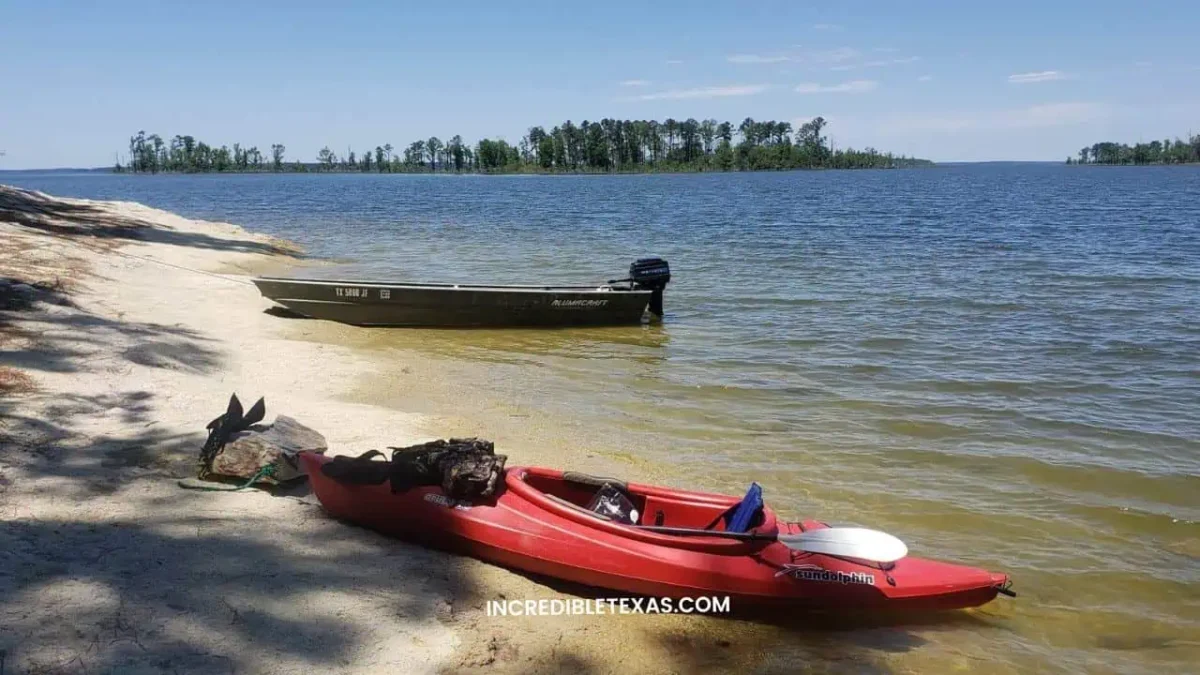
Key Activities
Fishing (Noted for Largemouth Bass) Sam Rayburn Reservoir is a premier spot for bass fishing, often hosting major tournaments. Anglers flock here for the abundant largemouth bass, which can be caught year-round. The reservoir is also home to crappie, catfish, and white bass, offering diverse fishing opportunities. Tactics vary by season, but common lures include crankbaits, spinnerbaits, and Carolina-rigged worms.
Boating and Water Sports: With numerous marinas and boat ramps, Sam Rayburn is perfect for boating and water sports. The lake’s vast expanse and calm coves make it ideal for water skiing, jet skiing, and paddleboarding. Powell Park Marina and other facilities offer rentals and services to enhance your experience on the water.
Camping and Hiking Trails: The reservoir is surrounded by excellent camping spots and hiking trails. Parks like Ebenezer Park provide well-maintained campgrounds with amenities for both tent and RV camping. Trails around the lake offer scenic views and a chance to explore the local flora and fauna. Hiking paths range from easy walks to more challenging routes through the Piney Woods.
Visitor Facilities and Amenities
Sam Rayburn Reservoir is equipped with numerous facilities to ensure a comfortable visit. The U.S. Army Corps of Engineers operates several parks around the lake, offering picnic areas, restrooms, and showers. Marinas provide boat rentals, bait shops, and dining options. Whether you’re camping or just visiting for the day, the amenities are designed to meet all your needs.
See Also – Seminole Canyon State Park Guide: Map, Hours, Pricing, Trails, Camping, and Cabins
Tips for a Successful Visit
- Best Times to Visit: Spring and fall are ideal for fishing and hiking due to the milder temperatures. Summer is perfect for water sports but can be busier.
- Permits and Regulations: Ensure you have a valid Texas fishing license if you’re planning to fish. Boaters should be aware of local regulations and safety requirements.
- Packing Essentials: Bring plenty of water, sunscreen, insect repellent, and comfortable clothing. A map of the reservoir and GPS can be helpful for navigating both the waters and the trails.
- Safety First: Be cautious of weather changes, and always wear life jackets when boating. Familiarize yourself with the locations of marinas and emergency services around the lake.
Sam Rayburn Reservoir offers an unmatched blend of recreational activities and natural beauty.
Martin Dies, Jr. State Park: An Outdoor Haven in East Texas
Located on the banks of the Steinhagen Reservoir in Jasper County, Martin Dies, Jr. State Park spans over 700 acres of lush forest and scenic waterways. This park, named after the former U.S. Congressman Martin Dies Jr., offers a serene getaway perfect for families, outdoor enthusiasts, and nature lovers. The park is known for its tranquil environment, making it an ideal spot for a weekend escape from the hustle and bustle of everyday life.
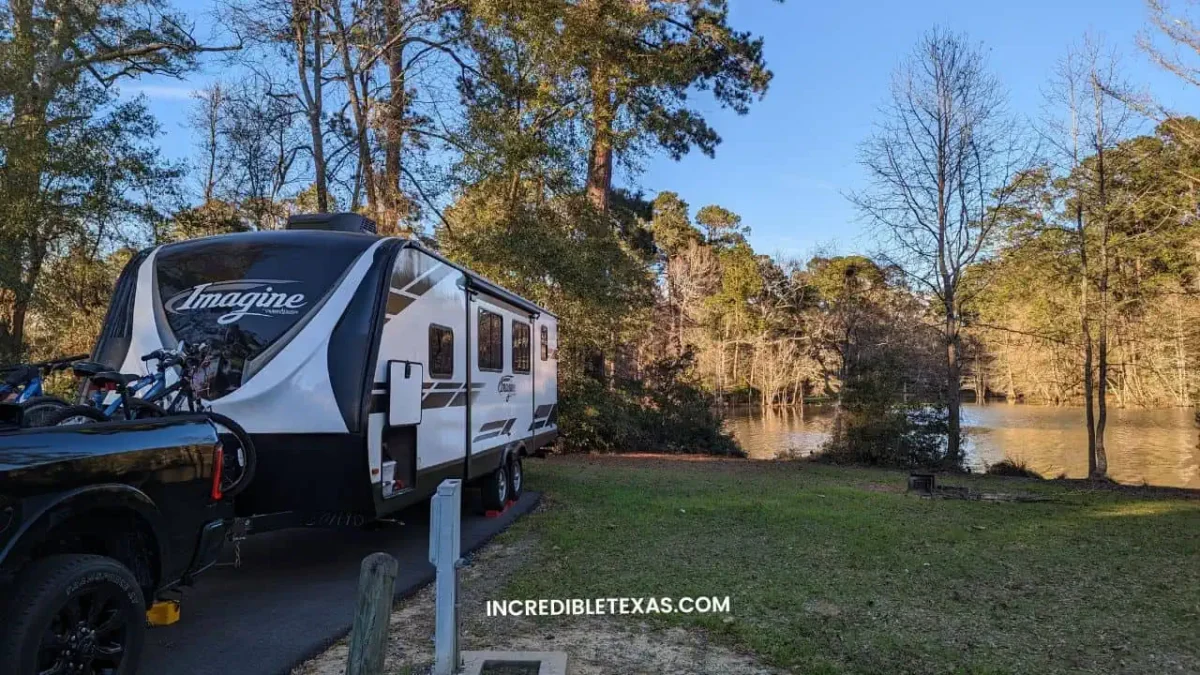
Main Attractions
Canoeing and Kayaking on the Neches River: One of the highlights of Martin Dies, Jr. State Park is its excellent paddling opportunities. The Neches River, along with several scenic sloughs, provides calm waters perfect for canoeing and kayaking. Rentals are available at the park, or you can bring your own gear. Paddling through the cypress-lined waterways offers a unique perspective on the park’s diverse ecosystem, with chances to spot local wildlife such as alligators and various bird species.
Hiking and Biking Trails: The park features several hiking and biking trails that wind through its picturesque piney woods and along the lake. Trails like the Slough Trail and Forest Trail provide easy to moderate hikes, offering beautiful views and opportunities to observe wildlife. These trails are well-maintained and suitable for all skill levels, making them perfect for a family outing or a solo adventure.
Camping and Picnicking Spots: Martin Dies, Jr. State Park offers a variety of camping options, including tent sites, RV hookups, and screened shelters. The park’s campsites are equipped with amenities such as restrooms, showers, and picnic tables, ensuring a comfortable stay. Several picnic areas with grills are scattered throughout the park, providing great spots for a family meal or a quiet lunch by the lake.
See Also – Explore Purtis Creek State Park: Map, Hours, Pricing, Trails, Camping, and Cabins in Texas
Seasonal Activities and Events
The park hosts a variety of seasonal activities and events throughout the year. Spring and fall are particularly popular times to visit due to the mild weather and vibrant foliage. The park organizes ranger-led programs, including guided nature walks, birdwatching tours, and stargazing events, which are educational and enjoyable for visitors of all ages.
Visitor Tips
- Best Times to Visit: Spring and fall offer the most pleasant weather and fewer insects. Summer can be hot and humid, so come prepared with insect repellent and plenty of water.
- Permits and Fees: The park is open year-round. The entrance fee is $4 for adults, while children 12 and under enter for free. Camping fees vary depending on the site and amenities.
- What to Bring: Essentials include sunscreen, bug spray, and comfortable shoes for hiking. If you plan to paddle, bring appropriate gear and life jackets.
- Safety Tips: Be aware of local wildlife, such as alligators, and maintain a safe distance. Always stay on designated trails and follow park rules to ensure a safe visit.
Martin Dies, Jr. State Park offers a diverse array of outdoor activities set against the backdrop of East Texas’s stunning natural beauty.
Sabine Pass Battleground State Historic Park: A Window to the Past
Sabine Pass Battleground State Historic Park is located in Jefferson County, Texas, near the Sabine River where it meets the Gulf of Mexico. This 58-acre site commemorates a pivotal Civil War battle that took place on September 8, 1863, when Confederate forces led by Lt. Richard “Dick” Dowling successfully defended the area against a Union invasion. The park offers a blend of historical significance and natural beauty, making it a must-visit for history buffs and nature lovers alike.
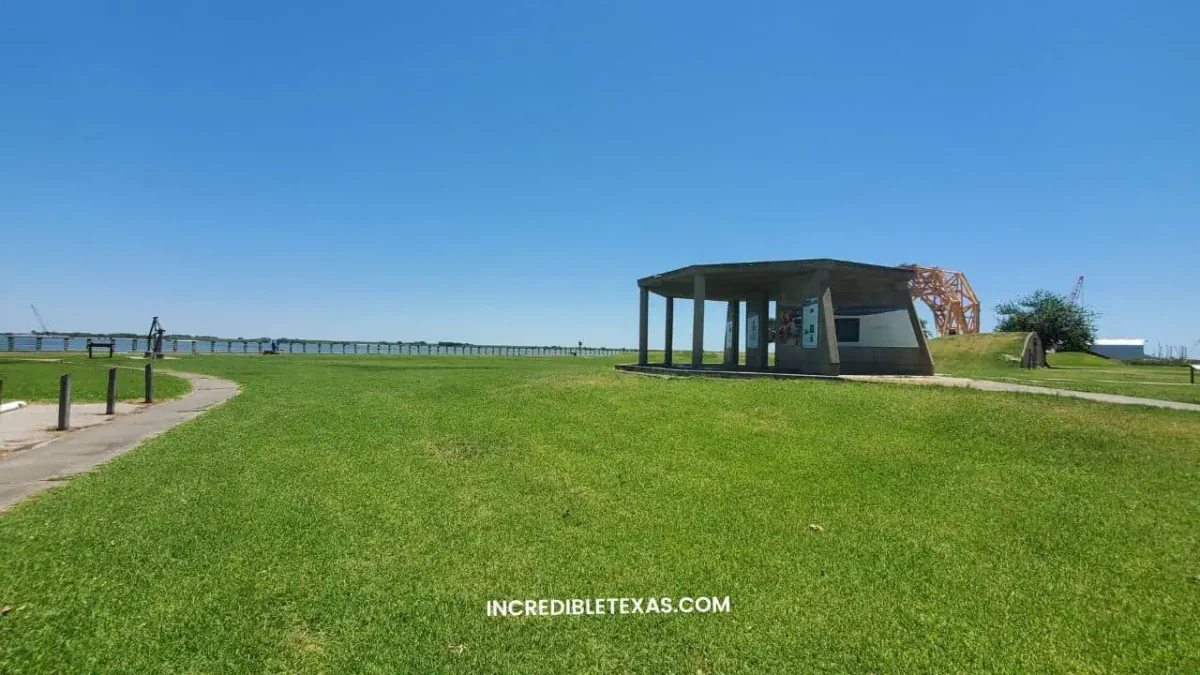
See Also – Explore Old Tunnel State Park: Hours, Tickets, Hiking Trails, Bat Viewing, and Camping in 2024
Historical Significance and Main Features
Civil War Battleground and Historic Monuments The park is most famous for the Battle of Sabine Pass, where Dowling and his 46 men managed to thwart a Union assault using six cannons, capturing over 300 Union soldiers.
A prominent feature of the park is the bronze statue of Lt. Dowling, which honors the bravery of these Confederate soldiers. Visitors can also see the remains of Fort Griffin, the Confederate stronghold during the battle.
Interpretive Exhibits and Walking Tours: The park includes an interpretive pavilion with exhibits that tell the story of the battle and its significance in the Civil War. A scale model of Fort Griffin and other informative displays provide a deeper understanding of the events that took place.
Self-guided walking tours allow visitors to explore the battlefield at their own pace, with markers and plaques providing historical context along the way.
Visitor Amenities and Services
Sabine Pass Battleground State Historic Park offers several amenities to enhance the visitor experience. There are picnic areas with tables and grills, making it a great spot for a family outing.
The park also has restrooms, a playground, and a boat ramp for those looking to explore the waterways. The grounds are well-maintained, ensuring a pleasant visit for all.
Tips for Exploring the Historic Site
- Best Times to Visit: The park is open year-round, but the cooler months from fall to spring are ideal for exploring comfortably. Weekdays are generally quieter, offering a more peaceful experience.
- Admission and Hours: The park is open Wednesday through Sunday from 8:00 AM to 5:00 PM. Admission is free, making it an affordable destination for history enthusiasts and families alike.
- What to Bring: Bring comfortable walking shoes, sunscreen, and plenty of water. A camera is also recommended to capture the historic sites and beautiful surroundings.
- Respect the History: While exploring, remember to respect the historical significance of the site. Stay on designated paths and follow park guidelines to preserve the integrity of the battleground.
Sabine Pass Battleground State Historic Park not only offers a fascinating glimpse into a critical moment in Civil War history but also provides a serene environment for outdoor activities.
Sea Rim State Park: A Coastal Gem of East Texas
Nestled on the upper Texas Gulf Coast, Sea Rim State Park spans 5.2 miles of pristine beachfront and over 4,000 acres of marshlands. Located at the far southeast corner of Texas, near Sabine Pass, this park offers a unique blend of coastal and marshland ecosystems, making it an ideal destination for outdoor enthusiasts and nature lovers alike.
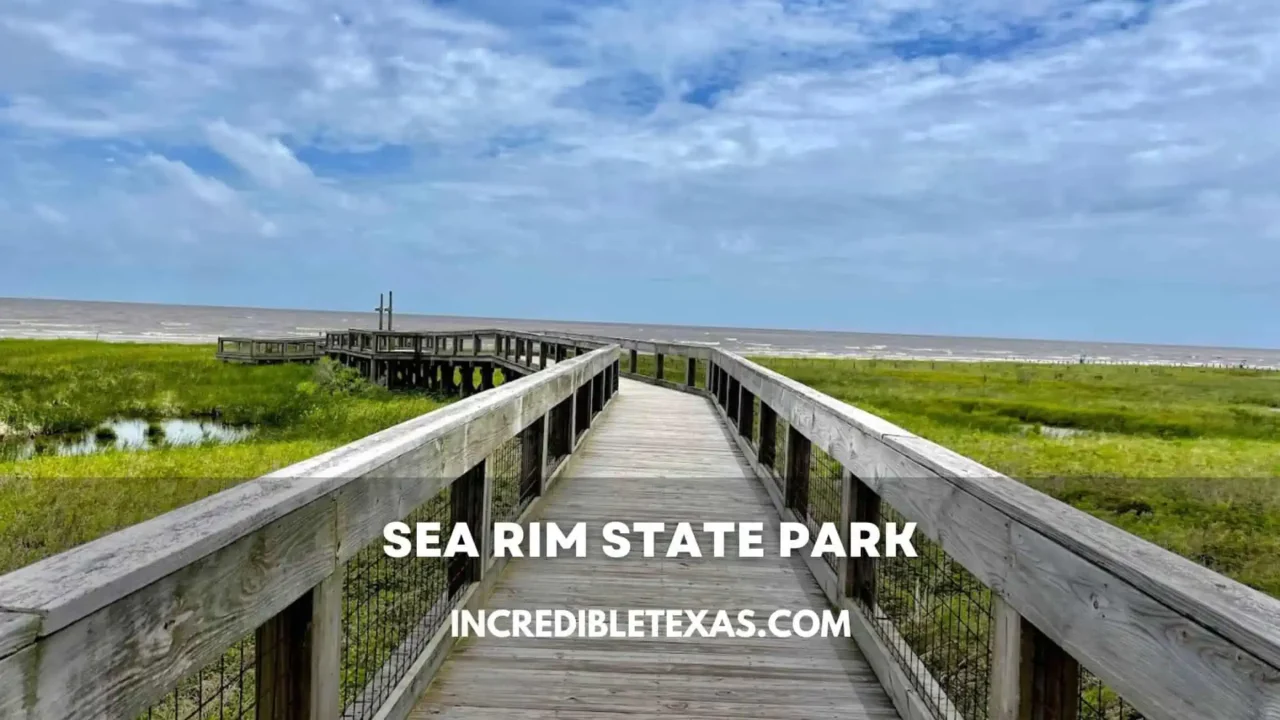
Main Attractions
Beachfront Activities: Sea Rim State Park’s beachfront is perfect for a variety of activities. Visitors can enjoy swimming, sunbathing, and beachcombing along the Gulf Coast shoreline. The natural beach is ideal for collecting seashells and experiencing the soothing sounds of the waves. It’s a fantastic spot for relaxing and enjoying the coastal scenery.
Marshland and Boardwalk Trails: The park features several trails that allow visitors to explore its vast marshlands. The Marsh Loop Trail and Beachfront Trail offer scenic walks through coastal marshes and along the beach, respectively. These trails are great for observing local wildlife and enjoying the tranquil environment. The park also has boardwalks that provide easy access to the marshes and offer unique views of the area’s diverse habitats.
Birdwatching and Fishing Birdwatchers will find Sea Rim State Park a haven, with its diverse bird populations. The park’s location along the Gulf Coast makes it a critical stopover for migratory birds. Bring your binoculars and spot various coastal species in their natural habitat. Fishing enthusiasts can enjoy both saltwater and freshwater fishing. The park provides opportunities for shore fishing, crabbing, and even kayak fishing in the marshes.
Camping Facilities and Visitor Amenities
Sea Rim State Park offers several camping options, including primitive beachside camping and more developed sites with amenities. The park has a waterfront cabin for those looking for a more comfortable stay.
Facilities include restrooms, showers, picnic areas, and a visitor center where guests can learn about the park’s natural and cultural history. The visitor center also provides information on ranger-led programs and trail maps.
See Also – Explore Ray Roberts Lake State Park: Map, Hours, Pricing, Trails, Camping, and Cabins in Texas
Tips for Enjoying the Park
- Best Times to Visit: Fall, winter, and spring are ideal due to mild weather and fewer crowds. Summer can be hot and humid, so plan your activities for early mornings or late afternoons to avoid the heat.
- What to Bring: Essentials include sunscreen, insect repellent, plenty of water, and comfortable walking shoes. A camera and binoculars are great for capturing the park’s natural beauty and birdwatching.
- Respect Wildlife: Maintain a safe distance from wildlife and do not feed the animals. Follow park guidelines to help preserve the natural ecosystem.
- Check Weather Conditions: Coastal weather can be unpredictable. Check the forecast before your visit and be prepared for sudden changes.
- Stay on Designated Trails: To protect the park’s natural beauty and wildlife, stick to marked paths and respect any closures.
Sea Rim State Park is a hidden gem on the Texas Gulf Coast, offering a mix of coastal and marshland adventures.
Mineola Nature Preserve: A Natural Escape in East Texas
Located on the Sabine River in Wood County, Texas, Mineola Nature Preserve spans nearly 3,000 acres of diverse landscapes, from dense forests to open prairies and wetlands. This vast preserve is a haven for wildlife, offering a tranquil retreat for outdoor enthusiasts and families looking to connect with nature.
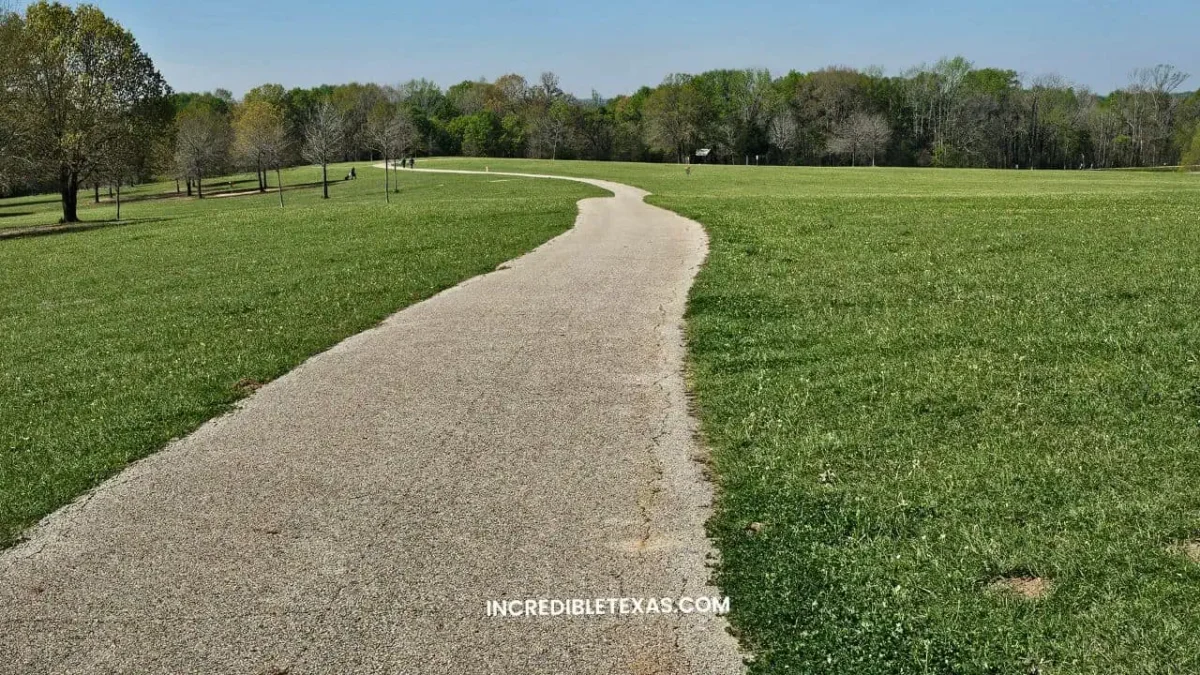
Key Attractions
Extensive Trail System for Hiking and Horseback Riding: The preserve boasts an extensive network of trails that cater to hikers, bikers, and horseback riders. The Appaloosa Trail winds through various terrains, offering picturesque views of the Sabine River and surrounding forests. These trails provide ample opportunities to explore the natural beauty of East Texas, with well-marked paths suitable for all skill levels.
Wildlife Viewing and Birdwatching With over 193 species of birds, Mineola Nature Preserve is a paradise for birdwatchers. The birding platforms and butterfly gardens are perfect spots to observe local and migratory birds in their natural habitats. Wildlife enthusiasts can also spot deer, rabbits, armadillos, and even buffalo and longhorn cattle in designated areas, making every visit an exciting adventure.
Fishing Ponds and Picnic Areas: The preserve features several ponds ideal for fishing. Anglers can enjoy a peaceful day by the water, catching a variety of local fish.
Numerous picnic areas equipped with tables and grills provide the perfect setting for a family outing or a relaxing lunch in nature. The well-maintained facilities ensure a comfortable and enjoyable experience for all visitors.
See Also – Explore Caprock Canyons State Park: Hours, Tickets, Camping, Hiking, and Activities for 2024
Visitor Information and Amenities
Mineola Nature Preserve is open daily from 7 AM to sunset, with no admission fee, making it an accessible destination for everyone. The preserve offers several amenities, including restrooms, showers, and a pavilion for gatherings. Camping is available, with options for both primitive and RV sites, complete with necessary utilities.
Tips for Exploring the Preserve
- Best Times to Visit: Spring and fall are the best seasons to visit, offering mild weather and beautiful scenery. Early morning and late afternoon are ideal for wildlife viewing and birdwatching.
- What to Bring: Pack sunscreen, insect repellent, water, and comfortable walking shoes. A camera and binoculars are great for capturing the stunning landscapes and wildlife.
- Respect Nature: Stay on designated trails to protect the preserve’s ecosystems. Do not disturb the wildlife, and always pack out what you pack in to keep the area clean.
- Stay Informed: Check weather conditions before your visit and be prepared for any changes. The preserve is a natural area, so be mindful of local wildlife, including snakes and insects.
Mineola Nature Preserve offers a serene escape into the natural world, with activities and amenities to suit all ages and interests.
Sabine National Forest: An Adventure in Nature
Located in East Texas, Sabine National Forest spans over 160,000 acres, making it the easternmost of the four national forests in Texas. This expansive forest lies on the western slopes of the Sabine River watershed, forming part of the boundary between Texas and Louisiana. It’s a perfect retreat for those seeking adventure and tranquility in nature.
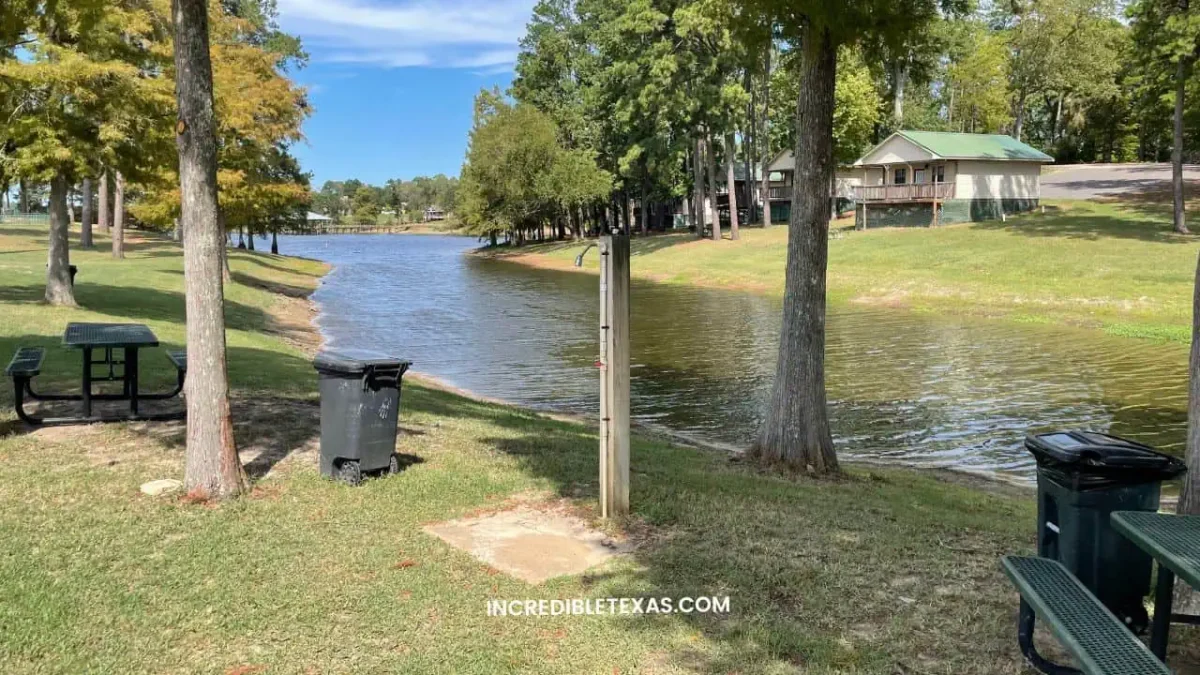
Main Attractions
Hiking, Camping, and Fishing: Sabine National Forest offers a variety of recreational activities. The forest features numerous trails for hiking and camping spots ranging from primitive sites to developed campgrounds.
Fishing is popular in the forest’s many lakes and ponds, particularly around the Toledo Bend Reservoir, where anglers can catch bass, crappie, and catfish. The 28-mile Trail Between the Lakes is a must-visit, extending from the Lakeview Recreation Area on Toledo Bend Reservoir to Highway 96 near Sam Rayburn Reservoir.
Scenic Drives and Wildlife Viewing: Driving through Sabine National Forest offers scenic views of dense pine forests, rolling hills, and the picturesque Toledo Bend Reservoir. Wildlife viewing is another major attraction, with opportunities to see deer, squirrels, waterfowl, and many bird species. The forest’s diverse habitats provide a haven for wildlife, making every visit an exciting chance to encounter nature.
Horseback Riding Trails: For equestrian enthusiasts, the forest has several trails designated for horseback riding. These trails offer a unique way to explore the forest’s beautiful landscapes. The roads and paths are well-maintained, ensuring a safe and enjoyable ride through the piney woods and along the shores of Toledo Bend.
Best Times to Visit and Seasonal Activities
Spring and fall are the best times to visit Sabine National Forest due to the mild weather and vibrant foliage. These seasons are ideal for hiking and horseback riding, as the trails are filled with blooming flowers in the spring and colorful leaves in the fall. Winter offers quieter experiences with fewer visitors, perfect for those looking to enjoy the solitude of nature.
Visitor Tips and Regulations
- Hours and Fees: The forest is open year-round. There are no entrance fees, but specific areas like campgrounds may charge usage fees. For example, camping at Indian Mounds Recreation Area costs $4 per night, and there is a $2 day-use fee per vehicle.
- What to Bring: Essentials include comfortable hiking boots, insect repellent, sunscreen, plenty of water, and a map of the forest. If fishing, ensure you have a valid Texas fishing license.
- Safety Tips: Stay on marked trails to protect the environment and ensure safety. Be mindful of local wildlife, and always follow the forest’s rules and regulations. Check weather conditions before your visit and prepare for changes.
- Accessibility: The forest offers accessible amenities including boat ramps, picnic tables, restrooms, and designated parking areas to accommodate all visitors.
Sabine National Forest is a natural treasure offering diverse outdoor activities for every nature enthusiast.
See also: Sabine ATV Park Map, Hours, Schedule, Events, Camping, ATV Ride, Review
Ratcliff Lake Recreation Area: A Tranquil Retreat in East Texas
Located within the Davy Crockett National Forest in Kennard, Texas, Ratcliff Lake Recreation Area offers a serene escape with its picturesque 45-acre lake and lush pine forests. Built-in 1936 by the Civilian Conservation Corps, the area has a rich history tied to the Central Coal and Coke Company sawmill that once operated there. Today, it serves as a popular destination for camping, hiking, fishing, and more.
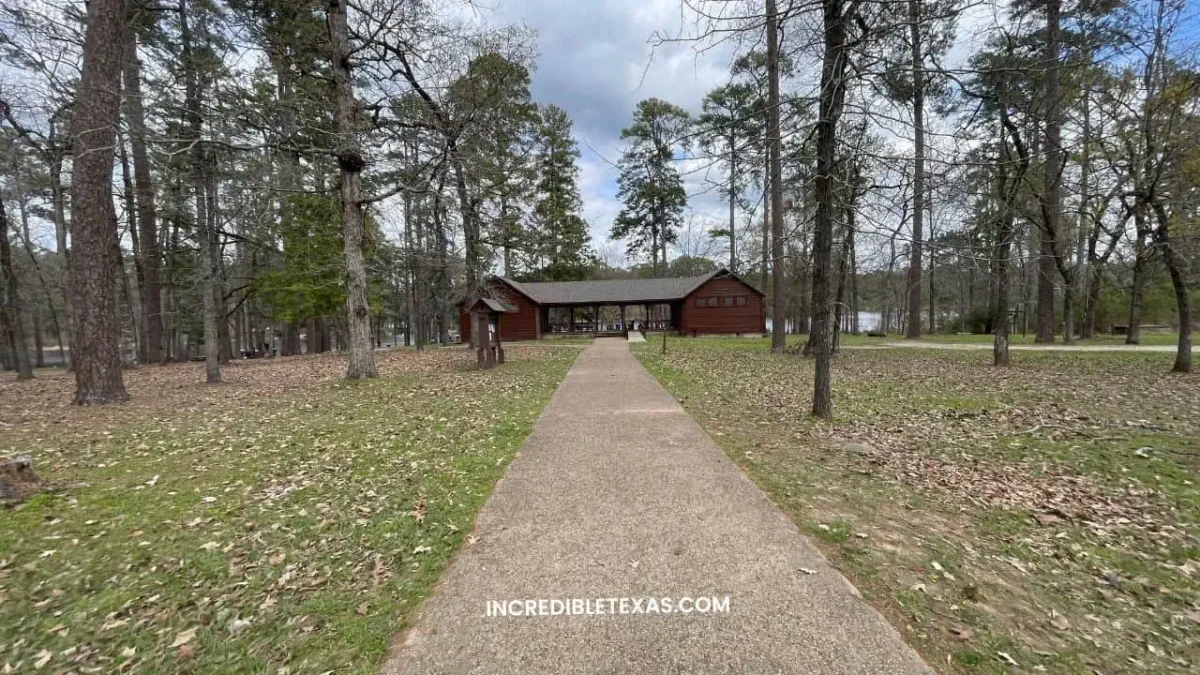
Key Attractions
Swimming, Boating, and Fishing in Ratcliff Lake: The lake at Ratcliff is perfect for a variety of water activities. Visitors can enjoy swimming in the designated area, though it’s important to note that no lifeguard is on duty.
Boating is allowed, but only with non-motorized or electric motor boats, preserving the tranquil environment. Fishing enthusiasts will find the lake stocked with largemouth bass, bream, and catfish. Fishing piers make it easy to cast a line and relax by the water.
Hiking and Nature Trails: Ratcliff Lake Recreation Area features several trails that cater to hikers of all levels. The Tall Pines Trail (1.5 miles), Trail Tamers Trail (0.75 miles), and the Four C National Recreation Trail (20 miles) offer diverse hiking experiences, from short walks through dense pine forests to longer treks with scenic overlooks. These trails are well-maintained and provide excellent opportunities to observe local wildlife and plant species.
Historic Sites and Interpretive Programs: The recreation area’s history is highlighted through various interpretive programs and historic sites. Educational displays and ranger-led tours provide insights into the area’s past and its development by the Civilian Conservation Corps. These programs are both informative and engaging, making them a great addition to any visit.
Visitor Amenities and Camping Facilities
Ratcliff Lake offers a variety of amenities to ensure a comfortable stay. The campground features tent sites, RV hookups, and group camping areas, with facilities such as restrooms, showers, and drinking water available.
Picnic tables and grills are provided at each campsite, and the area also includes a playground and accessible paths. Campsites can be reserved in advance through Recreation.gov, ensuring you have a spot upon arrival.
Tips for a Memorable Visit
- Best Times to Visit: Spring and fall are ideal due to mild weather and vibrant foliage. Summers can be hot, so plan water activities to stay cool.
- Reservations: Campsites can be reserved online or by calling 1-877-444-6777. Booking in advance is recommended, especially during peak seasons.
- What to Bring: Essentials include sunscreen, insect repellent, plenty of water, and comfortable shoes for hiking. If you plan to fish, bring your gear and a Texas fishing license.
- Safety Tips: Stay on marked trails to protect both yourself and the environment. Be mindful of local wildlife and follow park rules to ensure a safe visit.
- Getting There: The recreation area is located off State Highway 7, between Crockett and Kennard. From Crockett, head east on Highway 7 for 15 miles, and from Lufkin, head west for about 28 miles.
Ratcliff Lake Recreation Area offers a peaceful retreat with plenty of outdoor activities to enjoy.
See also: 14 Best State Parks Near Dallas and Fort Worth, TX
Final Thoughts on Best East Texas State Parks and Nature Reserves
As we wrap up our journey through East Texas’ natural wonders, its clear why these parks and reserves are treasured gems. From the towering pines of Tyler State Park to the diverse ecosystems of Caddo Lake, each destination offers a unique glimpse into the regions natural beauty.
These protected areas not only provide recreational opportunities but also serve as vital habitats for countless species. Whether you’re an avid hiker, a birdwatching enthusiast, or simply seeking a peaceful retreat, East Texas’ parks have something for everyone.
By visiting these natural havens, we not only enrich our own lives but also contribute to their preservation for future generations. The great outdoors are calling – will you answer?
